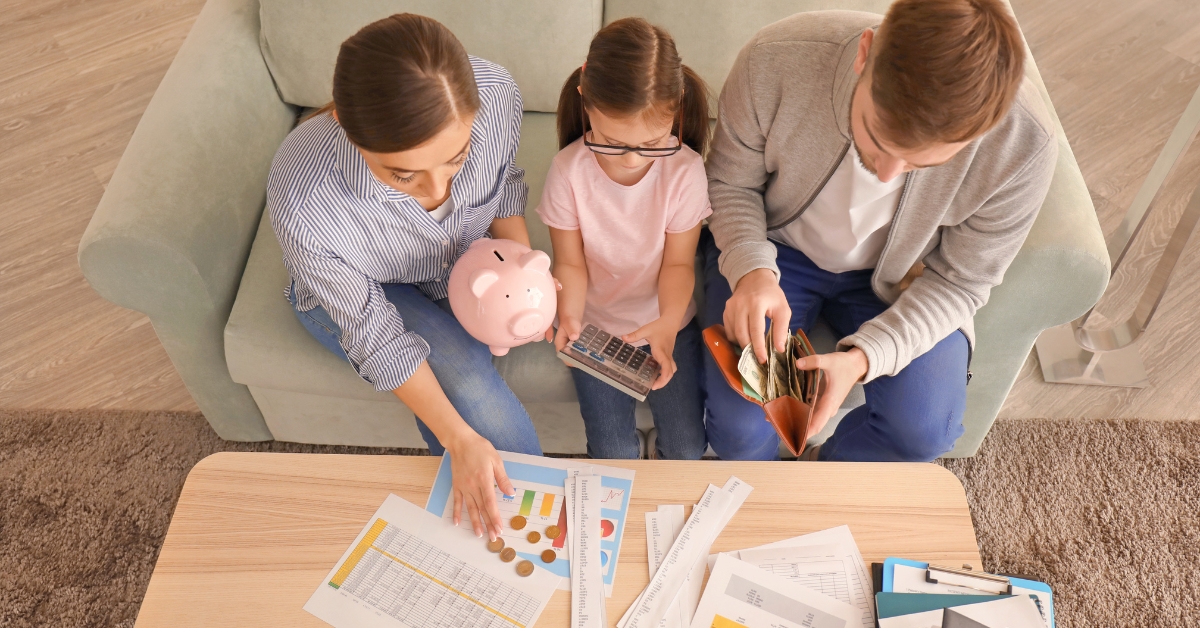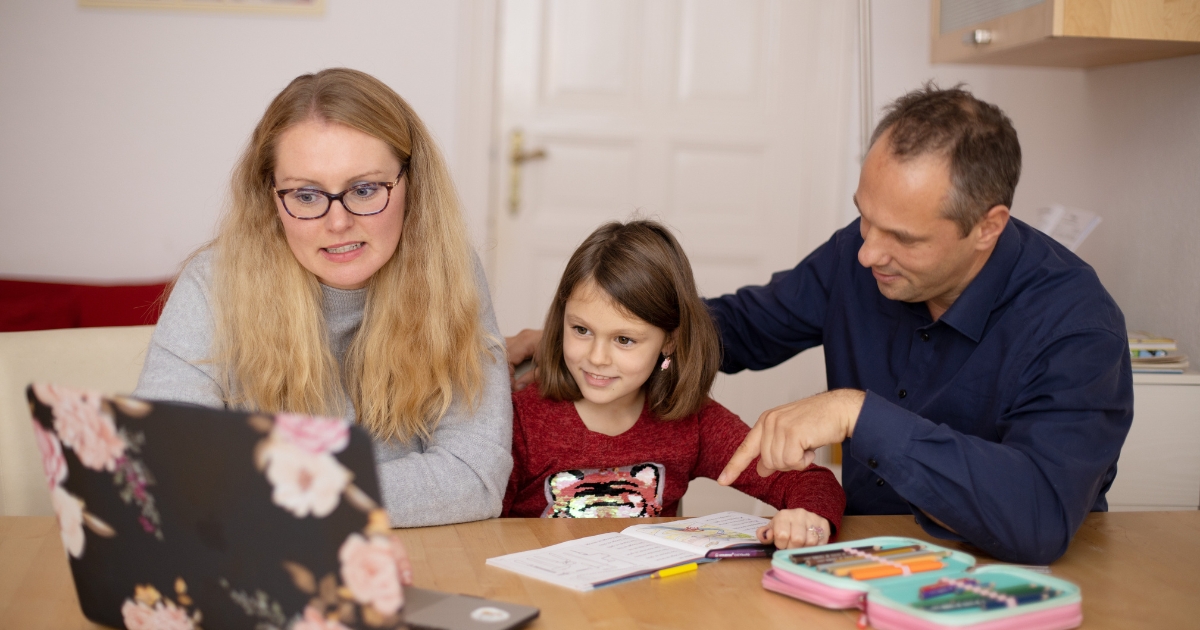Many parents wonder how to teach kids about money. Teaching children about personal finance and global trade might seem daunting, but it’s an achievable goal for homeschool parents. By weaving economics into your homeschooling curriculum, you can equip your kids with essential life skills. This blog post will guide you through practical lessons you can incorporate at home, ensuring your children understand the fundamentals of personal finance and the complexities of global trade.
Economics & Personal Finance For Beginners
Economics is more than just numbers and graphs; it’s a vital part of everyday life. Understanding how money works can help children make informed decisions, avoid unnecessary debt, and appreciate the value of saving. In today’s globalized world, knowing the basics of trade can also help them grasp international relations and economic policies. Parents often wonder about the best ways to introduce these topics. The good news is that economics can be taught through simple, engaging activities that resonate with kids. This section will highlight why teaching economics at home is crucial and provide a roadmap for what’s to come in this blog post.
Personal finance is the first step in teaching children about economics. Start with the basics, such as the value of money, budgeting, and saving. These fundamental concepts lay the groundwork for more complex topics later on. One effective way to introduce personal finance is through real-life examples. Discuss your family’s budget, explain how you allocate money for different expenses, and involve your kids in small financial decisions. This hands-on approach makes abstract concepts more tangible and relatable. You can also use games and activities to make learning fun. For instance, create a mock store where your children can practice buying and selling items. This activity teaches them about money management and the importance of making wise financial choices.
The Power Of Budgeting & Saving
Budgeting is a core component of personal finance and an essential skill for managing money effectively. Teach your children how to create a simple budget by listing their income (allowance, gifts, etc.) and expenses (toys, snacks, etc.). This exercise helps them understand the concept of living within their means. Explain the difference between needs and wants. Needs are essential items like food and clothing, while wants are non-essential items like toys and candy. Helping kids distinguish between the two can foster better spending habits and financial discipline. Encourage your children to set savings goals. Whether they’re saving for a new toy or a special outing, having a goal motivates them to stick to their budget. Celebrate their achievements to reinforce positive behavior and the benefits of saving.
Saving money is a habit that can benefit children throughout their lives. Teach your kids the importance of setting aside a portion of their income for future needs. Explain concepts like interest and how savings can grow over time. A practical way to illustrate saving is by using a piggy bank or a savings jar. Encourage your children to deposit a portion of their allowance regularly and watch their savings increase. This simple activity reinforces the value of delayed gratification and financial planning. Introduce the concept of a bank account when they’re ready. Many banks offer youth accounts with parental oversight, providing a safe and structured way for kids to learn about banking, interest, and the importance of financial security.
Credit and debt are integral parts of the financial world, but they can be tricky concepts for children to grasp. Simplify these ideas by explaining that credit is borrowed money that must be repaid, often with interest. Use age-appropriate examples, like borrowing a toy and returning it with an extra toy as “interest.” Discuss the positives and negatives of credit. While credit can be useful for making large purchases or building a credit score, it can also lead to debt if not managed responsibly. Share real-life scenarios where credit is used wisely and instances where debt can become overwhelming. Role-playing can be an effective teaching tool. Create scenarios where your children must decide whether to use credit or save for a purchase. This activity helps them understand the consequences of their financial choices and the importance of responsible credit use.
The Role Of Supply And Demand, Global Trade, & Exploring Economic Systems
Supply and demand are fundamental concepts in economics. Explain that supply refers to the quantity of a product available, while demand is the desire for that product. The interaction between supply and demand determines prices. Use real-life examples to illustrate these concepts. For instance, if a new toy is in high demand but has limited supply, its price will likely be higher. Conversely, if there are plenty of toys but low demand, the price will be lower. Incorporate supply and demand into everyday activities. When grocery shopping, discuss why certain items might be on sale (high supply, low demand) or why some products are more expensive (low supply, high demand). This practical approach helps children understand market dynamics and pricing strategies.
Global trade is a complex topic, but breaking it down into simple concepts can make it accessible to children. Start by explaining that countries trade goods and services they produce with other countries. This exchange benefits both parties and promotes economic growth. Use everyday items to illustrate global trade. Look at the labels on clothing, electronics, and food products to see where they were made. Discuss how these items traveled from other countries to your home, highlighting the interconnectedness of the global economy. Engage your kids in a mock trade activity. Assign them different “countries” and have them trade goods like toys, snacks, or handmade crafts. This hands-on experience helps them understand the basics of supply and demand, trade agreements, and economic interdependence.
Economic systems vary from country to country, and understanding these systems can provide valuable insights into global trade and governance. Simplify the three main types of economic systems—capitalist, socialist, and mixed economies—for your children. Explain that a capitalist economy is driven by private ownership and free markets, where businesses compete to offer goods and services. In a socialist economy, the government controls production and distribution, aiming for equal wealth distribution. A mixed economy combines elements of both systems, balancing private enterprise with government regulation. Use examples from different countries to illustrate these systems. Discuss how these economic structures impact everyday life, including job opportunities, healthcare, and education. This conversation fosters a global perspective and critical thinking about economic policies.
Current events provide a rich source of learning material for homeschool lessons on economics. Discussing real-world news helps children connect theoretical concepts to practical applications, making learning more relevant and engaging. Select age-appropriate news articles related to finance, trade, or economic policies. Read and discuss these articles together, encouraging your children to ask questions and share their thoughts. This practice builds critical thinking skills and keeps them informed about global economic trends. Create a “news day” in your homeschooling schedule where you review and analyze recent economic developments. This routine fosters a habit of staying updated on current events and understanding their impact on the economy.
Leveraging Technology, Interactive Learning, And Online Resources
Technology offers a wealth of resources to enhance your homeschool economics curriculum. Utilize educational websites, apps, and online courses to supplement your lessons and provide diverse learning experiences. Websites like Khan Academy and Coursera offer free courses on personal finance and economics, which are suitable for beginners. These platforms provide structured lessons, interactive quizzes, and video tutorials to support your teaching efforts. Explore finance-related apps designed for kids, such as PiggyBot or Bankaroo. These apps make learning about money management fun and interactive, reinforcing the concepts you teach at home through engaging digital activities.
Interactive activities can make economic lessons more engaging and memorable. Incorporate games, simulations, and hands-on projects to reinforce key concepts and encourage active participation. For example, play board games like Monopoly or The Game of Life, which teach financial management, investment strategies, and the consequences of economic decisions. These games provide a fun and educational way to explore personal finance and economic principles. Organize a family “market day” where your children create and sell homemade products. This activity teaches them about entrepreneurship, setting prices, negotiating, and managing profits. It also fosters creativity and practical business skills.
Building a community of learners can also enhance your homeschool experience and provide additional support. Connect with other homeschool parents to share resources, ideas, and experiences related to teaching economics. Join online forums, social media groups, or local homeschooling co-ops focused on economics education. These communities offer a platform for discussing challenges, celebrating successes, and exchanging valuable insights. Consider organizing group activities or field trips related to economics. Visiting local businesses, banks, or trade fairs can provide real-world learning experiences and opportunities for your children to interact with peers who share similar interests.
Making Economics Fun And Relevant
The key to successful teaching is making the subject matter fun and relevant. Relate economic concepts to your children’s daily lives and interests to keep them engaged and motivated. For instance, if your child loves baking, use this hobby to teach lessons on budgeting, cost analysis, and profit margins. Discuss the expenses involved in making a batch of cookies and how selling them at a school event could generate profit. Incorporate storytelling into your lessons. Share stories of famous entrepreneurs, inventors, and economists who have made significant contributions to the field. These narratives can inspire your children and make the subject matter more relatable.
Teaching economics at home is a rewarding endeavor that equips your children with essential life skills. By incorporating lessons on personal finance and global trade, you help them understand the world around them and make informed decisions. Remember, the goal is to make learning fun, interactive, and relevant. Use real-life examples, hands-on activities, and technology to enhance your lessons. Build a community of learners to share insights and support each other on this educational journey.





